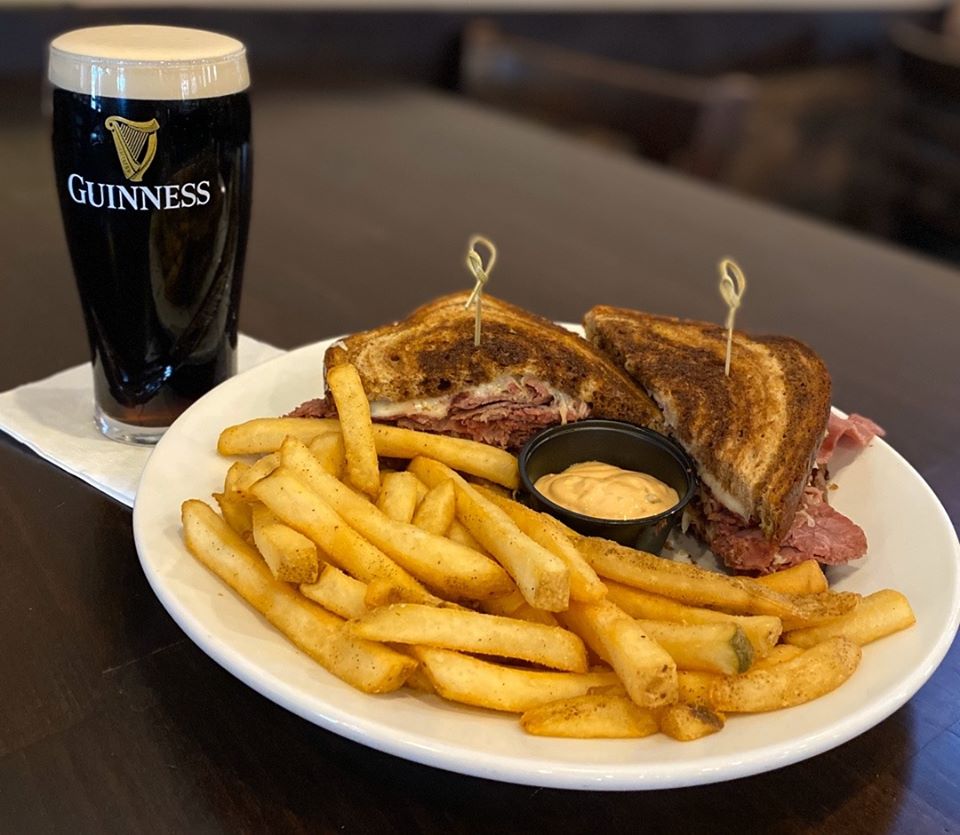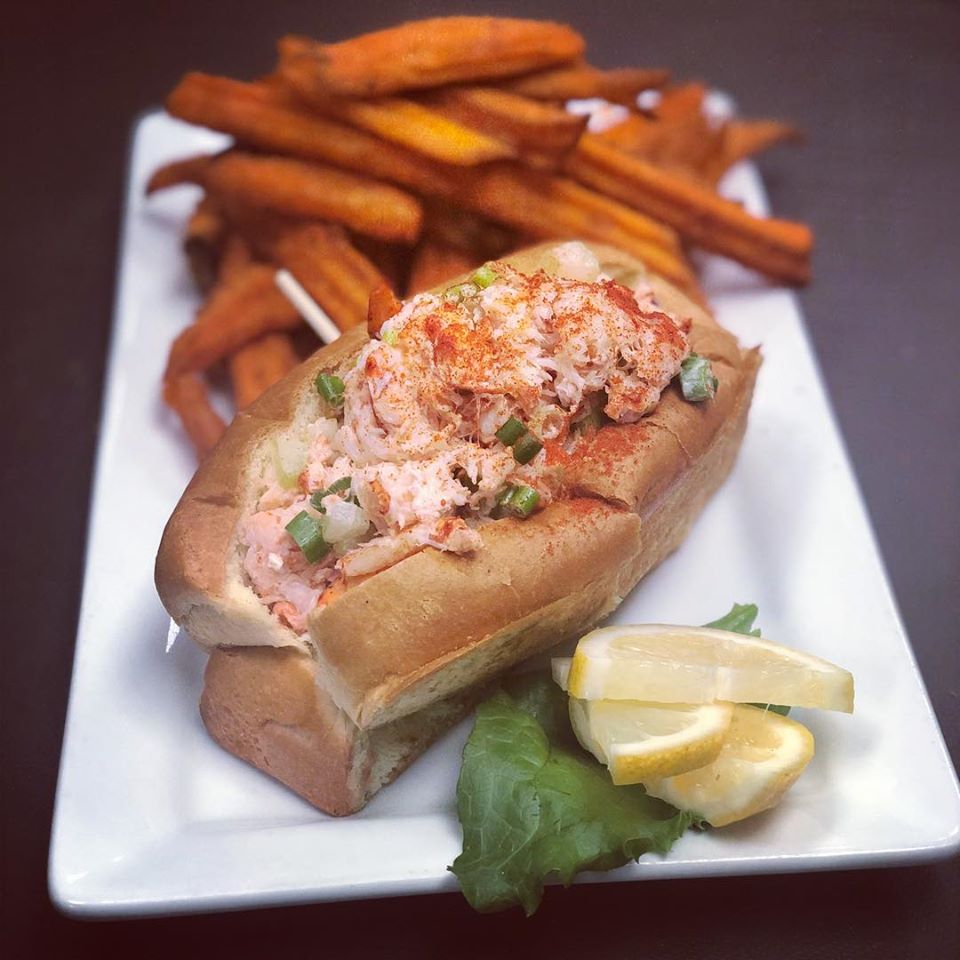Dances are made in time and space, a minute or an hour in a dancer’s life never to be seen again. Dances do not last–they have to be made new each time and evaporate as they are appearing. Today, small freedoms–moving, gathering, and connecting–have been restricted to limit the movement of a virus that, whether we want to admit it or not, is showing us just how connected we are.
The same situation is playing out with dancers worldwide: projects, galas, gigs, shows, and even seasons abruptly wiped from the calendars. It is not surprising that an art form defined by movement has sprung to action. Dancers are dancing in their kitchens and living rooms. Dancers are dancing with cats and children running through the room. Dancers are teaching classes to hundreds, even thousands of distant viewers, over online platforms. Dancers are migrants, and the dance community is small. Now it is smaller and bigger than ever.
Dance was once an art that had to be done face-to-face, in your face, feet on the ground where will and gravity placed them. Now, in a virtual world where time, space, and place don’t matter, what remains is energy, and that energy can travel faster than ever before. Dancers dance.
DANCING ONLINE
Katherine Disenhof
It was Friday the 13th. “We had just taken our morning company ballet class when we were told, ‘Portland schools have just shut down. We’re closing the building,'” recalls Katherine Disenhof, who, along with her fellow NW Dance Project company members, packed up and left. Disenhof headed home to California, where she also works as a freelance graphic designer. “Usually graphic design work fills my layoff time,” she says. “I work for Bay Area performing arts organizations, and all their events have been canceled.”
Nevertheless, dancers must dance. “I started looking for ways I could give myself class at home. I was searching through my own network for classes and figured, if people are going to have to do this, I’ll try and figure out a way to bring all the information into one place.” Three days later, Disenhof launched Dancing Alone Together (@dancing.alone.together) on Instagram. Within hours, the account had over 3,000 followers–today it provides information on digitally accessible classes, projects, and performances worldwide to over 20,000 people. “It really shows how far and wide the dance world goes: professional dancers, adult dancers, people who danced in college who now find themselves alone in their apartments and wanting to do something.”
“It’s been incredible how the dance world has adapted and rallied at a time just to keep things running. The sheer quantity of classes has been overwhelming,” she says. To maintain the sense of a living community, the account mainly features livestream classes, which are being offered by dancers, companies, and studios at an unprecedented rate, most available free or by donation by members of an industry that has been uniformly put out of work.
Of the future of her work, Disenhof speaks with a dancer’s detachment to objects of permanence: “I hope that in a couple weeks or months, this whole thing will be completely useless, and we’ll find ourselves going back into the studios and doing what we should do. But for now, I’m trying to bring people together in a positive way.”
Terence Marling
Among those teaching online today is Chicago native Terence Marling, who trained at Ruth Page Center for the Arts and performed at Pittsburgh Ballet Theatre and Nationaltheater Mannheim in Germany before returning to dance with Hubbard Street Dance Chicago, where he has also worked as rehearsal director and director for Hubbard Street 2. Last fall, Marling launched Common Conservatory at the Menomonee Club for Boys and Girls, which he describes as “a dojo for dance, for young dancers seeking their way in the professional world.”
“I have been in a dance studio every day for 34 years,” says Marling, “actually longer–I used to watch my mom [dancer Clare Carmichael, who founded Chicago Ballet Arts] in class from the age of two.” Today Marling continues the tradition from his living room, where he streams a ballet warm-up over Instagram Live (@common.conservatory) six days a week at 11 AM. “I thought, ‘You know what, I’ve got to do a barre every day, and everyone’s got to do a barre!’ So I decided to put it out there, because what’s stopping us from doing at least that much?”
Uncertain of what teaching to a screen would feel like or who would participate, Marling launched his experiment on March 16. To his surprise, over 60 dancers tuned in the first day. “I thought, OK, if there are going to be 60 people here, and they’re doing some tendus, this actually feels important.” The numbers shot up as the week progressed, far more than would fit into a studio–60 to 90 to 150 to 200–dancers not only from Chicago but from around the world seeking regular practice.
“As dancers, we need movement,” Marling says. “It’s not something we do because we want to–we have to. Especially at this time, when anxiety is so high, it’s important to move your body every day. One of the only ways we can emotionally support each other is by developing these places to meet and holding ourselves accountable by being there, by trying every day. I’m astounded by the number of people who have made it their daily ritual.”
“We have to get through this, until we get to the time we can gather again, and I can open Common back up. I really can’t wait for that day.”
Peff Modelski
A veteran dancer since her first contract job in the Royal Ballet’s Sleeping Beauty at the age of six, Peff Modelski moved seamlessly from Fiddler on the Roof on Broadway to teaching six or seven days a week at STEPS on Broadway. “I’ve been teaching for over 45 years,” she says of a career that has allowed her to impart a technique designed to prevent injury and build somatic awareness to generations of professional dancers, choreographers, and directors. Now 74, Modelski, who has taught in Chicago for the past 12 years, is another pioneer in online dance instruction.
“People who had trained with me said, ‘I want to hear your voice. I need your class.’ When somebody asks me for help, I never say no,” she says. But the technology posed a challenge to Modelski, who relies on eye contact and touch to connect with her students. “I did an awful lot of learning in three days. I watched about twelve hours of instructional videos. Finally, two dancers I’ve known for 40-something years got online and walked me through until I was able. I used to do that with them, so it was wonderful to make a 40-year Mobius loop like that.”
Of her experience teaching over Facebook Live, she says, “I was talking to an empty room for an hour–I’m either an actress or a madwoman! But being able to connect with so many people and receive their feedback was wonderful.”
“This version of the world is temporary,” she continues. “It requires an enormous amount of inconvenient maturity from many people, including me. When we are again in a position when we can gather together, the same thing will happen that happened two days after 9/11: the studio is going to be packed. But for now, take a deep breath, have a good lunch, learn a new platform.”
Nick Pupillo
“People need to dance,” says Nick Pupillo, founder and director of Visceral Dance Center and Visceral Dance Chicago. “This is not just something we do. It’s part of our lives. It’s more than just a practice–it’s our passion.” Visceral Dance Center is usually open year-round, including most holidays, and offers 95 youth, adult, and professional classes weekly, as well as workshops and master classes. Pupillo’s normal work week is about 55 hours in seven days, teaching, coaching, choreographing, and managing the company, youth company, and school. The hubbub came to a screeching halt on March 16, when Visceral closed its doors for COVID-19.
“How does the world just stop? I have dancers who need to get paid, faculty who need to get paid. How can we keep going when we don’t have any money coming in?” he wonders. Though initially skeptical about teaching online (“I don’t want to teach to a screen! I need the energy of the class and the people around me”), Pupillo has experimented with livestreaming from the studio over Facebook, Instagram, and Zoom.
“I thought it might make people feel better just seeing the space,” he says. “And seeing people of so many different levels and ages made me feel like I was part of their lives like I usually am when I teach. Visceral is a community. But there were also friends who have probably never seen a dance class before watching. This might be a way to expose the arts to a new community, which I had never thought about before.”
“I’m paying my staff right now, paying my dancers, paying the teachers–but I don’t know how long I can do that. If we keep going for three weeks with no revenue coming in, I don’t know. But what I think affects me most is, who has money coming in right now? So many people are out of work–all these dancers–every artist–can’t get paid right now.”
Angela Tam
Although Chicago officially went under lockdown on March 21, some studios and companies have been feeling the pinch longer–perhaps none more so than Yin He Dance, a Chinatown-based company and studio in Chicago that performs classical and contemporary Chinese dance. “COVID-19 has been affecting us since January,” says cofounder and director Angela Tam. “We have been operating in deficit since the beginning of the year due to lower attendance rates, especially among our youngest students.”
Noting lower attendance at Lunar New Year performances at venues such as Navy Pier, where the company performs annually, Tam says, “I think the situation was scarier for many in Chinatown because many know people in China and/or follow online media about how the virus progressed in China. Many New Year-themed banquets where we perform were also canceled.” Since the shutdown, the company has been rehearsing once a week over Facebook Messenger.
Tam takes a calm view of the future. “I know the situation will pass,” she says. “When Yin He first started in 2016, we had two classes of two students each for the first few months, and we regularly performed for fewer than ten people, which was not much better than what we’re going through now. It’s all uphill from here.”
COPING CREATIVELY
Yin Yue
Born in Shanghai and based in New York, choreographer Yin Yue, who won the Hubbard Street Dance Chicago International Commissioning Project in 2015, is no stranger to dancing online. She keeps a steady stream of content flowing to her personal and company Instagram accounts (@theyinyue and @yydcinc)–performance clips, glimpses of rehearsals, and shots of the open class she teaches twice a week at Peridance. “Online presence is the only way for small companies to keep going,” she says pragmatically. “New productions take time. People can’t take 12 months to hear from you.”
When studios in New York began to close, Yin decided against trying to conceive an online version of her class. Instead, she wanted to create a project to engage dancers over a longer period of time. The result is “Solo Together,” which she choreographs in installments and teaches over Instagram, with the intention of creating a single work over the entire lockdown. “Everybody is doing it as a solo because you’re supposed to be isolated at home. But we’re learning together. We’ll see how long this situation goes–I’ll keep adding on to the end.”
“My parents and friends are in China,” says Yin. “They experienced this earlier, with extreme measures right away. They have been locked down for almost two months now. Now we’re locked down and they’re starting to go out. I feel stronger because of that. It happened in another country. There’s something to learn from that.”
“I want to encourage people to enjoy this time to focus on details and train mentally,” she says. “In class, because it’s live, you cannot hold onto details–once a movement has happened, you catch it or miss it. With recordings, you can rewind, go back, pause. You can train yourself to follow, train your patience, zoom in, process this information. In rehearsal, too, when everyone’s focused, there’s this heaviness in time that requires you to look at one thing rather than get somewhere really quickly.”
Cristal Sabbagh
“Our current government is not a place I can find truth or comfort. There are so many lies being told and so much corruption. I need to try to lean on my friends and see what we can do as an offering,” says multidisciplinary artist Cristal Sabbagh, who teaches art at Stevenson High School in Lincolnshire. With friends scattered as far as Japan, Sabbagh has been exploring dance in an online community of improvisers weekly. Organized under the hashtag #promptresponsegroup, the friends use single-word prompts to generate dances–recently including “wonder,” “center,” “resonate,” “ground,” and “water.”
“I try to keep it positive and use simple symbols to spread love,” she says. “My faith is with artists: they are problem solvers and creative thinkers trying to make connections, making the most out of something horrendous.”
Jane Jerardi
Caught midprocess, Jane Jerardi faces uncertainty about future performances. “My mentors at the SAIC would say, ‘You make in the time constraints that you have.’ For now, we’re continuing [virtually] to keep a normalcy, joy, and stability to our week, with the sense that [the lockdown] is another thing that is going to inform the project. A lot of our choice making is limited, so how do we make this new constraint part of what we’re making? It could be impossible, especially if one of us gets sick.” The title of Jerardi’s yearlong project, on the theme of desire, is eerily prescient: Delicate Hold.
In addition to her independent work, Jerardi works as faculty and technical coordinator at the Dance Center of Columbia College, where she produces video documentation of the Presenting Series as well as student and faculty performances.
“The Dance Center has an archive that dates from the 1980s to the present,” says Jerardi. “We’ve had to postpone our shows, but we were thinking audiences in Chicago might need some respite.” Through May, the Dance Center has therefore made its recordings of complete performances available to the public. “The Dance Center is unusual in its range of programming. My hope is that people will see this work, a lot of which is not available otherwise, and realize these companies also need some support.”
Reflect (a sidebar)
“There are copious quantities of dance and fitness offerings online right now, and it has been wonderful to see the dance community come together and creatively adapt to an ever-changing crisis. That drive from our community was fairly unsurprising. Artists are used to precarious circumstances. What has been difficult for me has been all the pressure to ‘remain productive’ or ‘use the time to get into amazing shape.’ There is nothing normal about this situation, and everyone will cope differently. Also, all the societal pressure of productivity is driven by capitalism which is, in my opinion, why we’re in this mess in the first place. I personally had to sit on the couch for a few days. I’m actively trying to overcome making myself feel bad for that. That said, I just took a mini Cunningham class offered live by Jennifer Goggins (@mercetrust) and I feel 1000% better. So I think it’s up to each of us to navigate, contribute and participate in whatever ways we can, and it’s OK too if we can’t, or don’t want to.” Cristina Tadeo, freelance artist, operations manager for Khecari, and MFA candidate at the University of New Mexico
“My days and moments are valuable whether or not I plug in, produce something, connect, or create. I have been taking kitchen barre daily with Terry, and loving it, but I almost feel more FOMO now than I did when I was too busy to connect with all these incredible and generous resources. I think we need to know that it’s OK to sit and take it all in. To slow down and reflect. To observe.” Karen Castleman, former dancer with Hubbard Street Dance Chicago, Lyric Opera of Chicago, and Momenta, currently dance program director at Arkansas Arts Academy
“I thought this situation was going to be an opportunity for all of us to rest, be still, connect with our inner self, and stop capitalist ways of living, [but] this is not the case. Institutions are working hard to stay alive, and it looks like people really don’t want to isolate. They want to be connected. Creativity requires space and radical slowness, which we, as artists, rarely get to have. It’s not happening right now either.” Daiane Lopes da Silva, artistic director of Kinetech Arts
“We are doing rehearsals via Skype, and a friend in Sri Lanka was able to join for the sessions. But overall, I feel very bombarded with all the social media online classes. I felt the pressure to jump and present something online right away–but I didn’t teach a regular class before, so why now? I need some time to absorb and process and look into myself before jumping in,” Kinnari Vora, cofounder of Ishti Dance
DANCE ALONE
“Dance is not the body that creates the movement. Dance is the movement,” asserts Christopher Knowlton, a choreographer and biomechanics researcher who manages the motion analysis laboratory at Rush University. “With motion capture, you’re abstracting the motion from the body that created it, and that opens up so many possibilities. The body carries so many signifiers and so many social cues of identity, but to be able to pick apart the markers of identity that are in the movement, not the physical form of the person, is so interesting to me. Puppetry gives us insight into that: we can move a piece of trash and have a totally emotional response to that. Dance doesn’t necessitate a body. Using motion capture and digital media avatars and augmented reality is a way to strip away some of that for me. Can we look at the movement and not look at the bodies doing the movement?”
For the past several months, Knowlton has been developing an augmented reality platform that offers a different view on dancing. Viewed through a smart mobile device, like Snapchat filters and Pokemon Go, the program displays a virtual layer over what the camera sees. “The performance is virtual, and your access to the performance is through the device,” Knowlton explains. “Technology can be a prosthetic to allow audience members to become more active viewers.”
The performance he envisions, under the working title Extended Play, takes place on the rotating surface of a vinyl record. Knowlton is developing code that would allow a smart device to recognize record labels and display a dancing avatar on the record, “like a traditional music box with a ballerina sculpture that spins or a zoetrope. And once you get into digital media, anything goes. You don’t have to obey the laws of physics. You can create a whole scene, it doesn’t have to be one avatar, it can be a whole cast. There’s a lot of creative freedom.” Viewers could personalize their experiences by watching from different angles and would have the opportunity to see the same performance repeated differently–and they could do it all at home: “You don’t have to show up at the theater at a certain time. You don’t have to sit in the audience. I like this idea of sitting with a record and listening to an album. It’s intentional and not performative, not like showing up to a theater with friends and being seen but experiencing it for yourself. I like that sense of isolation and intimacy.”
The process has also been isolated. “Right now, the movement originates in my body,” explains Knowlton. “It’s something I measure and record, and right now, it’s being put into an avatar that’s a mini-me. I don’t know many dancers or media artists who are doing this, so I haven’t had many colleagues. I haven’t been at the point when I can invite another dancer in my process yet–it’s just been me in the studio teaching how to do things myself.”
DANCE TOGETHER
When San Francisco went under lockdown, freelance dancer Becky Robinson-Leviton quickly decided she was not going to sit still. On Monday, she taped together several paper bags and wrote in all caps with a Sharpie, “BACK WINDOW DANCE WORKOUT PARTY EVERYDAY @ 12 PM,” stuck it to a fence where her neighbors could see, and on Tuesday she “started going out there at noon and doing the thing”–“the thing” being a loose warm up of “grapevines, ponies, jumping jacks, grooving around, a little bit of stretching, a little bit of abs, a one-minute plank, and one more song of free dancing.” The whole thing takes about twenty minutes.
“Eventually, these girls from across the way started dancing with me,” she says. They have danced together ever since. “There’s something really special about connecting with somebody you don’t have any reason to make contact with. It reminded me that dance is a community-building tool. Dance is a social activity. Dance is for everyone to participate in as a community.”
As a dance instructor, Robinson-Leviton has also had her share of communicating digitally to teach her classes. “Analog appeals to me right now: how can we still have human-to-human connection while social distancing and not using technology?” She cites a viral video of locked-down Italians singing together from their balconies as motivation for this work: “That made me think hosting a dance party on my back porch was achievable.”
For those inspired to join the movement, Robinson-Leviton offers advice. “You need to break the ice and make sure it’s safe for everybody. Melinda, my housemate and I, danced together the first two days, then people started joining in. I usually am one of the first people out on the dance floor–I hate people feeling anxiety about going out there, so I think, ‘I will be the goofball who helps us get through this moment. I will take one for the team.'” As for her other neighbors? “They’ve looked out their windows and waved, but they haven’t joined.” Yet.
DANCE AROUND THE WORLD
For two years, choreographer Nejla Yatkin traveled to 20 cities around the world creating site-specific dances in public spaces with local dancers. Dancing around the World, an award-winning short film in collaboration with Enki Andrews, documents this work, and Yatkin has recently been rereleasing segments over social media.
“I did this project to show that we are these separate countries but in essence we are a global human network,” says Yatkin. “When we have met our basic needs, we all like community, we like to exchange with others, we like to collaborate. I didn’t go to showcase each country’s dance but to give improvisation prompts and to see how people move together. In many places it was similar–there are differences in energy, but most of us have the same two arms, five fingers, two legs. How far can you go with that? By showing that, I was hoping people would come together, and countries would feel more connected to each other.”
“With the 2016 election, the country went the other way. Instead of connecting with the global community, we separated ourselves more and more. Now our problems are bigger than our country. Climate change needs to be tackled globally or else we’re not going to survive as a human tribe. This virus is a global issue. We have to collaborate.”
The prompts Yatkin used to connect with her dancers were abstract: “lines, curves, meeting each other, the spaces in between people, how we connect, and how we go apart. Where does your self start and where does the other begin? Geometry is so universal, using those forms in movement also leads to more universality than my telling them how to move or what to do.” The results of Yatkin’s project showed her that “we can work together around the world. Hopefully we’ll get back to that place.”
THE LONG VIEW
Irene Lo
“It’s been almost two months. We don’t really go out at all. We take class with Zoom and teach class with Zoom and have meetings over Zoom. Now the world is locking down, so I have had a lot of meetings with people around the world asking me how they’re going to teach. I’m Zooming all the time!” says Irene Lo, laughing. Lo is a dance and yoga instructor who teaches company classes for Hong Kong’s City Contemporary Dance Company (CCDC) and Hong Kong Ballet. She also teaches at the Hong Kong Academy for Performing Arts, where she is studying for an MFA in dance education.
“We were on Chinese New Year holiday when the virus happened,” she says. With tumult from the 2019 protests, schools and studios in Hong Kong had already closed early, and many performances were canceled when public transportation in the special administrative region shut down. “We were worried–we had had SARS before, and so many people were dying in Wuhan. Schools could close an extra two weeks, but CCDC needed to start working. They were expecting to tour Europe in March.”
However, fearing infection, the company opted to keep dancers healthy at home. “Yoga class was easy–all you need is a mat,” says Lo, who had never taught online before. “We thought of it at 8 PM, and the next morning, we did it. It was easy. With everyone stuck at home, even just over the camera, it felt good to communicate.”
Gradually Lo began to develop her curriculum. “Hong Kong apartments are small. So we do some stretching, a floor barre, then a whole barre. Some center: port de bras, tendus, no turning–just releves. Just a little bouncing instead of jumps. No traveling. We finish with stretching, and that’s a whole class–I started with an hour, now it’s an hour and a half. They’re all sweating. I ask for feedback, and they tell me what’s going on. I adjust every time.”
A technical team from the company put in a computer and a projector to allow Lo to see all 14 company members at once by projecting two screens on the wall, as well as adjust her lighting and equip her with a mic. “I can see them all and give corrections,” she says.
This summer, CCDC will lose its studios of the past 40 years. In the meantime, the dancers continue to dance.
“This week, friends from the UK, U.S., Singapore, Malaysia, Philippines are all writing to me to ask how to teach online, three or four a day,” she says. “I’ve been sharing my experiences. The dance world is small. v
Read More




















Leave a comment